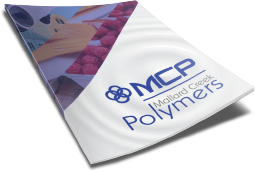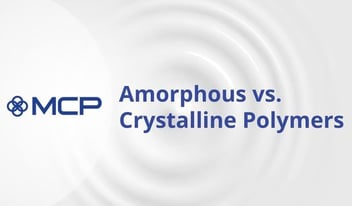
Hard and brittle? Soft and pliable? Or somewhere in between? The properties of polymers can vary greatly, and those properties can be tuned to meet a specific customer need. Whether you are considering a polymer for outdoor house paint or for the..
Hard and brittle? Soft and pliable? Or somewhere in between? The properties of polymers can vary greatly, and those properties can be tuned to meet a specific customer need. Whether you are considering a polymer for outdoor house paint or for the undercoating of an automobile, its behavior at the different temperatures it will be exposed to must be part of the discussion. That’s why decisions about polymer performance almost always include the calculation of glass transition temperature, or Tg — because Tg helps end users anticipate how a latex polymer will behave at its service temperature.
Glass Transition Science
There are many kinds of polymers, including plastics, rubber, elastomers and latexes, but they all have one thing in common — they are composed of long chains of molecules organized into complex arrangements. In crystalline polymers, the chains arrange themselves in an orderly fashion, often with one molecular chain locked against another. In other polymers, classified as amorphous, the long chains of molecules are randomly packed together with no discernible order.
As an interesting side note, glass is an amorphous material, but it’s not a polymer — it’s a non-polymeric amorphous solid. Still, the behavior of glass can be useful in understanding how polymers work. It’s hard and brittle at room temperature, yet it’s soft and pliable when it gets heated. As we’ll discuss next, amorphous polymers behave in a similar manner.
When crystalline polymers are heated and reach a certain temperature, the orderly arrangement of their long chain structure transitions to a random and disorganized arrangement. The solid polymer literally transitions and melts into a liquid state. The temperature at which this change occurs is the melting point (Tm).
Amorphous polymers do not melt when heated. Instead, as heating continues, the polymer chains become mobile, causing the material to become softer and less rigid, or vice versa. The point of this change is known as the glass transition temperature (Tg). The Tg of a specific polymer may be listed as a single temperature, but this number is an average value calculated from a range of temperatures. As with melting, glass transition is signified by a change in heat capacity — i.e., it absorbs heat, but rather than getting hotter, the material goes through this change of state. It’s important to note that some polymers can have a portion of their chains that are crystalline and a portion that are amorphous. Such polymers would have both a melting point and a glass transition temperature.
The most common way to measure the Tg of amorphous polymers is differential scanning calorimetry, or DSC. In DSC, the polymer sample is placed in the calorimeter, which measures quantities of absorbed or emitted heat in the sample as the temperature increases. As the changes to these polymers are gradual, by convention, the Tg is reported as the midpoint of this transition.
DISCUSS YOUR APPLICATION IDEAS WITH THE SPECIALISTS AT MALLARD CREEK POLYMERS
Setting the Tg
Many important commercial polymers, like those made by Mallard Creek Polymers, fall into the amorphous category. The glass transition temperature of these polymers typically ranges from -80°C to +100°C. The Tg can be manipulated by varying the polymer composition. For example, in a styrene-butadiene latex emulsion, the styrene has a Tg of +100°C while the Tg of butadiene is -85°C. However, changing the ratio of styrene to butadiene will cause a shift in the Tg, as well as a shift in the end product’s performance.
Why Vary Tg?
Every application has different needs. Different needs require polymers with unique properties. One of the clearest examples of this is commercial latex paint. Latex-based paints typically have glass transition temperatures between 10° to 20°C (50° and 70°F). When they are applied within this temperature range, they form a superior film, have good adhesion and don’t show any surface defects. If, however, they are applied when it’s too cold outside (i.e., below their Tg), they become more glass-like and brittle, which causes the paint to crack. If they are applied when it’s too hot outside (i.e., above their Tg), they become more rubber-like, which causes a lack of adhesion and the formation of bubbles.
Of course, temperature is not the only factor that affects how latex paints dry. Humidity also plays an important role: too little humidity and the paint will dry too quickly, affecting adhesion to the surface; too much humidity and the paint will dry too slowly, increasing the risk of irregular appearance, as well as damage by wind and airborne debris. The best humidity range for outdoor painting is 40 to 70 percent.
Glass transition temperature also plays a critical role in the performance of adhesives. In particular, it can have significant impact on tack, peel and shear — three properties that define the type of bond created between two surfaces. For example, Tg affects the pliability of an adhesive, especially at low temperatures. That’s why it’s often desirable for an adhesive to have a Tg as low as -40°C to ensure it stays pliable and tacky both at room temperatures and at temperatures below freezing.
Consult a Specialist
At Mallard Creek Polymers, we rely on Tg to understand how a polymer will perform at the range of temperatures to which it will be exposed. The polymer emulsion should be selected after considering the Tg and specific performance requirements. Our specialists will work with you to understand your needs and determine how to best build a product of superior performance.

 Construction
Construction
 Nonwovens
Nonwovens
 Adhesives
Adhesives
 Textiles
Textiles
 Printing & Packaging
Printing & Packaging
 Paper
Paper
 Paints & Coatings
Paints & Coatings





